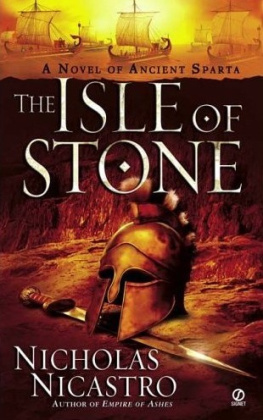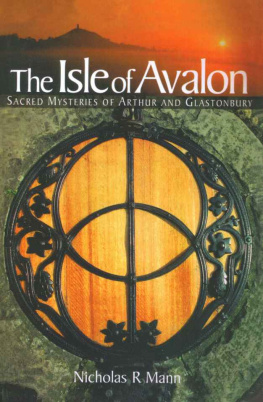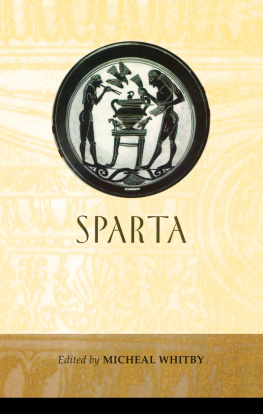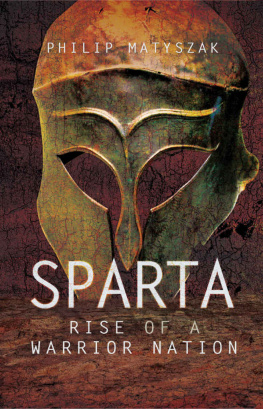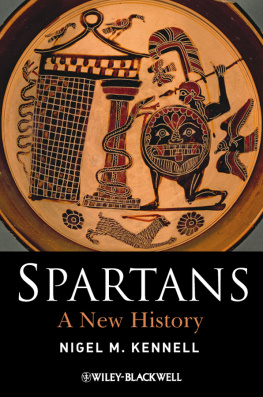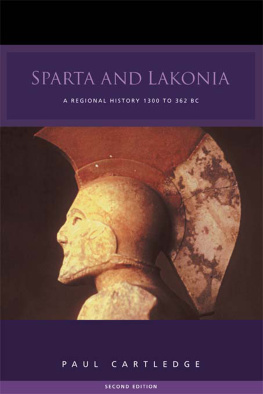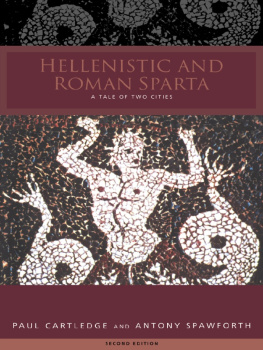Table of Contents
Praise for Nicholas Nicastros novels
The Isle of Stone
From its explosive first pages, The Isle of Stone draws you into the gritty reality of Sparta during the Peloponnesian War. Nicastro writes powerful prose, but this is no exercise in debunking With drama, passion, and a sure touch for the facts, Nicastro reveals the heroism behind the humiliation of the shocking day when some of Spartas unconquerable soldiers surrendered. His images of life and death under the Mediterranean sun hit you like the glare of a polished shield.
Barry Strauss, author of The Battle of Salamis: The Naval Encounter That Saved Greeceand Western Civilization
Empire of Ashes
Great historical fiction. Nicholas Nicastro paints an entirely believable portrait of the world of Alexander the Great, with the period detail and nuance that gives the reader a true feel for the time period. Even better, he resists simply regurgitating our common understanding of Alexander, and instead presents an unexpected and at times startling picture of a hero we thought we knew, but perhaps did not. Empire of Ashes is both fast-paced and scholarly, a difficult combination to achieve, but Nicastro succeeds beautifully.
James L. Nelson, author of The Only Life That Mattered and Reign of Iron
Empire of Ashes manages to be many things at the same time. The book is a grand historical epic combined with a court-room drama and political intrigue. Believable characters rise off the page in clear, evocative language. Nicastro has a talent for capturing the attitude and motivations of historical times, and creating stories which tell us something about our current time and situation. The result is a captivating and compelling page-turner.
Pamela Goddard, Ithaca Times
A great read. I loved the style and thought the framing device of the court case was fascinating and gripping. The sights, sounds, and social life of ancient Athens came to life for me in a way that few historical novels seem to manage. The characters were carefully and convincingly created and forced me to make various judgments about them, and then revise them, just as real people do. The action scenes were great too. Grim and gritty and vividly brought to life. All in all a great achievement.
Simon Scarrow, author of The Eagle and the Wolves and The Eagles Conquest
and Nicholas Nicastros other historical thrillers
Nicastro takes you by the scruff of your neck and yanks you into the action of history.
Ithaca Times
An effective storyteller [with] a deft command of the language.
The BookPress
Nuanced, insightful, and thoroughly believable.... Nicastro does what the artist can do and the historian cannot; probe the inner mind of the historical [figure].... Carefully researched, accurate in tone and detail.
James L. Nelson, author of the Revolution at Sea Saga
This maritime historical novel fairly shimmers with furtive lustiness and wry humor. Embellishing John Paul Joness early naval intrigues and sexual liaisons, Nicholas Nicastro preserves the true spirit of a mercurial and moody hero.
Jill B. Gidmark, University of Minnesota Professor of English
SIGNET
Published by New American Library, a division of
Penguin Group (USA) Inc., 375 Hudson Street,
New York, New York 10014, USA
Penguin Group (Canada), 90 Eglinton Avenue East, Suite 700, Toronto,
Ontario M4P 2Y3, Canada (a division of Pearson Penguin Canada Inc.)
Penguin Books Ltd., 80 Strand, London WC2R 0RL, England
Penguin Ireland, 25 St. Stephens Green, Dublin 2,
Ireland (a division of Penguin Books Ltd.)
Penguin Group (Australia), 250 Camberwell Road, Camberwell, Victoria 3124,
Australia (a division of Pearson Australia Group Pty. Ltd.)
Penguin Books India Pvt. Ltd., 11 Community Centre, Panchsheel Park,
New Delhi - 110 017, India
Penguin Group (NZ), cnr Airborne and Rosedale Roads, Albany,
Auckland 1310, New Zealand (a division of Pearson New Zealand Ltd.)
Penguin Books (South Africa) (Pty.) Ltd., 24 Sturdee Avenue,
Rosebank, Johannesburg 2196, South Africa
Penguin Books Ltd., Registered Offices:
80 Strand, London WC2R 0RL, England
First published by Signet, an imprint of New American Library,
a division of Penguin Group (USA) Inc.
First Printing, December 2005
Copyright Nicholas Nicastro, 2005
Map copyright Jeffrey L. Ward, 2005
All rights reserved
eISBN : 978-1-101-09701-4
REGISTERED TRADEMARKMARCA REGISTRADA
Without limiting the rights under copyright reserved above, no part of this publication may be reproduced, stored in or introduced into a retrieval system, or transmitted, in any form, or by any means (electronic, mechanical, photocopying, recording, or otherwise), without the prior written permission of both the copyright owner and the above publisher of this book.
PUBLISHERS NOTE
This is a work of fiction. Names, characters, places, and incidents either are the product of the authors imagination or are used fictitiously, and any resemblance to actual persons, living or dead, business establishments, events, or locales is entirely coincidental.
The publisher does not have any control over and does not assume any responsibility for author or third-party Web sites or their content.
The scanning, uploading, and distribution of this book via the Internet or via any other means without the permission of the publisher is illegal and punishable by law. Please purchase only authorized electronic editions, and do not participate in or encourage electronic piracy of copyrighted materials. Your support of the authors rights is appreciated.
http://us.penguingroup.com
To Dr. Fred Keating, teacher, for his patience, good
taste, and timely encouragement
Historical Note
The Peloponnesian War was the war to end all wars in antiquity: a conflict of unprecedented scope, length, and destructiveness, after which nothing was the same. Fought over a period of twenty-seven years, it pitted Athens and her sometimes-reluctant imperial subjects against a league of Peloponnesian states led by Sparta. This novel dramatizes one of the wars key campaignsthe entrapment and siege of hitherto undefeated Spartan soldiers on a narrow island in the west of Greece. The incident turned out to be a high point of the struggle for the Athenians, who still lost the war.
Readers unfamiliar with this subject may be confused by the varying ways the ancients referred to the Spartans and their allies (Lacedaemonians, Laconians, Peloponnesians, Spartiates, Equals, et al). By way of clarification, Lacedaemon and Laconia are alternative names for the fertile valley region in the southern Peloponnese that encompassed the city of Sparta. Although all Lacedaemonians were Peloponnesians, the region of the Peloponnese included a number of other important city-states that were part of the Spartan bloc. Describing a force as Peloponnesian therefore emphasizes a preponderance of Spartan allies within (though at least some Spartans were usually part of such armies or fleets).
The term Spartiate is a more restrictive one than Lacedaemonian. It refers to those adult males in the Spartan population who attained the status of full citizenship by completing the requisite course of education (the agoge or Rearing), being elected to a communal mess, and attaining the age of thirty. The number of full-blown Spartiates amounted to only a small minority in the city population and the army. This shortage of elite manpower obligated the state to accept into service noncitizen Lacedaemonians, including resident aliens called perioikoi (circum-habitants, here designated as Nigh-Dwellers), ex-citizens stripped of their citizenship for conduct or financial reasons, and, in extreme circumstances, state slaves (helots) who served in exchange for their freedom. Spartiates referred to one another as homoioi, which I follow certain authorities in translating as Equals. Those who had graduated from the agoge, but were not yet thirty years old, belonged in an informal age-class called the hebontes (rendered here simply as under-thirties).




